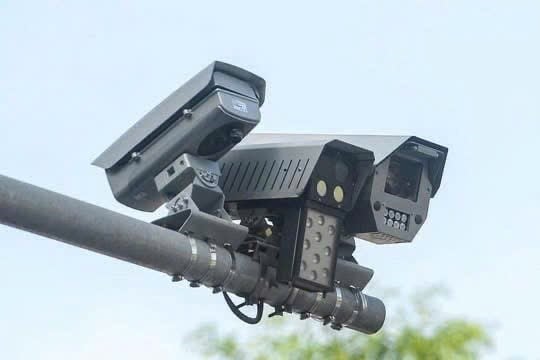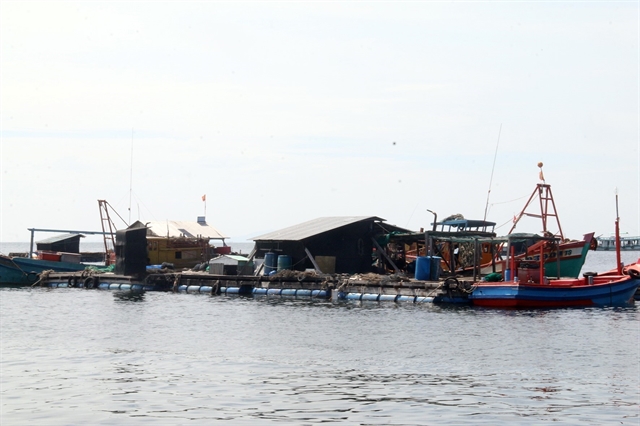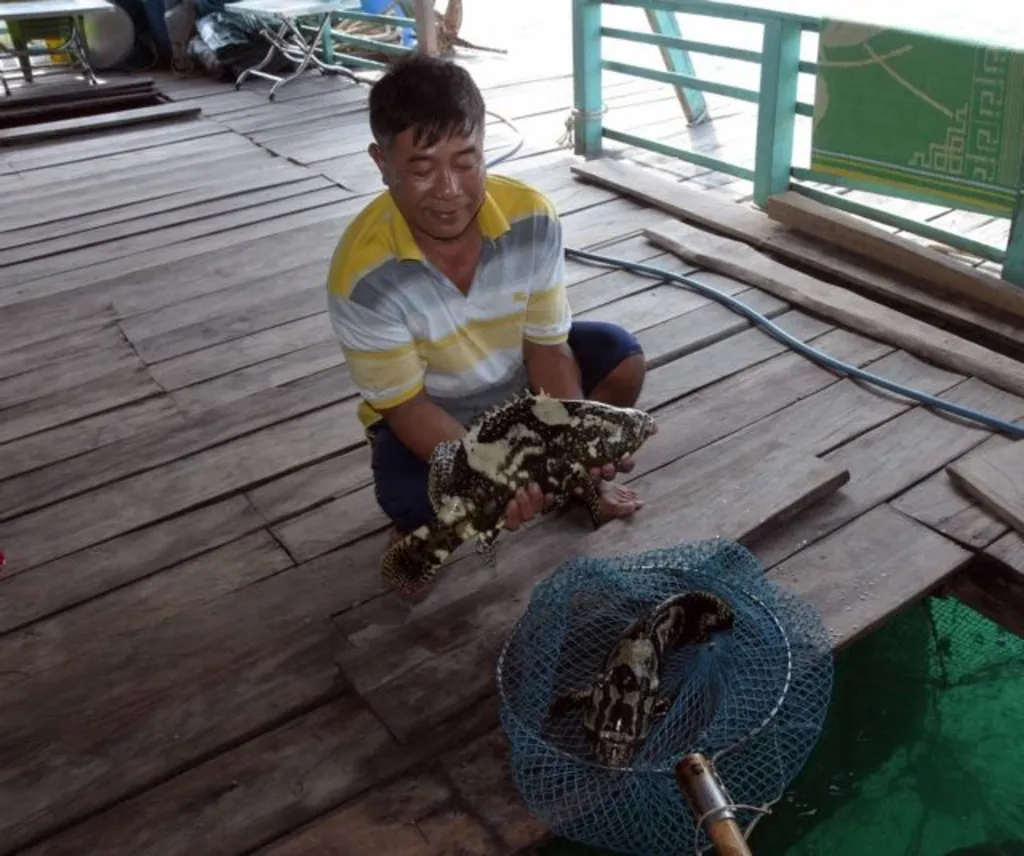 Society
Society

 |
| Floating cages for breeding marine fish in Kiên Giang Province’s Kiên Hải District. — VNA/VNS Photo Lê Sen |
KIÊN GIANG — Kiên Giang Province plans to expand marine aquaculture by using modern methods to increase farmers’ incomes.
The Cửu Long (Mekong) Delta province has huge potential for marine aquaculture with its coastline of more than 200km and 143 small and large islands.
Its waters teem with high-value marine species with such as cobia, grouper and pomfret fishes and pearl oysters.
Nguyễn Thanh Nhàn, deputy chairman of its People’s Committee, said: “The province has identified the marine economy as a focus of development, especially effective and sustainable development of marine aquaculture.”
The province is implementing a plan to develop marine aquaculture in 2020-30.
It had 3,870 floating cages for breeding marine species as of last year with an annual output of 3,910 tonnes.
It has the largest number of such floating cages of any province in the delta.
Cage aquaculture has been popular in the province since 2000 and has grown significantly in the last five years due to its high efficiency and reliability.
It is carried out mostly in Kiên Hải and Kiên Lương districts and Phú Quốc and Hà Tiên cities.
The province’s Agriculture Extension Centre is implementing a model that used high-density polyethylene (HDPE) floating cages in place of traditional wooden ones to enhance breeding efficiency.
There are 69 HDPE floating cages with a total volume of 3,530cu.m in the province. They produce yields of 16 kilogrammes of aquatic species per cubic metre, four or five kilogrammes more than wooden ones.
Lê Văn Xẻo, director of the Tiến Đạt Co-operative in Kiên Hải District’s Lại Sơn Commune, said the extension centre provided support to his co-operative’s members to set up 10 HDPE cages in 2022.
After seeing their efficiency during one to two harvests, most members switched to them, he said.
The HDPE cages have a life of 20 years as against three or four years for the wooden ones, he said.
“HDPE floating cages cope better with strong waves than wooden ones and fish raised in them develop well. But not many farmers are able to buy them since their cost is high.”
To develop marine aquaculture sustainably, the province aims to step up the use of high-tech breeding methods, including the use of HDPE cages.
High profits
Farmers in coastal areas and islands have bred more than 2,800ha of aquatic species in marine cages and harvested 2,000 tonnes as of early June.
 |
| A farmer checks grouper fish bred in a floating cage in Lại Sơn Commune in Kiên Giang Province’s Kiên Hải District. – VNA/VNS Photo Lê Sen |
Ninh Văn Sờn, who has been raising fish in Kiên Lương District’s Hòn Nghệ Commune for 15 years, said this year he bought more than 10,000 fish fry to breed, mostly pearl grouper, cobia, yellow pomfret, and red drum, in four HDPE cages and 16 wooden cages.
He has sold more than 2,000 mature fish so far this year and earned profits of VNĐ100 million (US$3,900), he said.
The prices of marine aquatic species have been high since the end of last year and so most farmers are making high profits, he said.
Breeding fish in HDPE cages is efficient but each costs VNĐ40-60 million ($1,600-2,300), and so he does not have enough money to buy more of them, he said.
“I hope the Government will [provide] soft loans or [allow] repayment in instalments so that farmers can invest in the cages.”
Development
Kiên Giang targets having 7,500 cages and an annual output of 29,890 tonnes by 2025, increasing to 14,000 and 105,690 tonnes by 2030.
It has taken a number of measures to help farmers develop marine aquaculture in recent years, organising many training courses and seminars to train them.
Võ Thị Thắm, who has 40 floating cages and breeds various fishes in Kiên Hải District’s Hòn Tre Commune, said: “I and my husband participate in all seminars and training courses on breeding techniques and apply them. My family has used HDPE floating cages for two years.”
She harvests 40 tonnes a year and earn VNĐ1 billion ($39,000), she said.
But the province faces difficulties such as small scale of breeding and disease outbreaks, according to its Department of Agriculture and Rural Development.
Lê Hữu Toàn, its director, said concentrated breeding areas would be set up for marine aquaculture, linkages would be created between various stakeholders in the supply chain and identifying codes for farmers would be issued.
The province plans to strengthen fisheries extension activities, ensure breeding areas and water environment meet stringent standards, and enhance disease forecasting and water quality to help farmers to avoid losses.
It will create favourable conditions for farmers to access soft loans and find markets for their produce at home and abroad.
The province has issued licences for four marine aquaculture projects costing a total of VNĐ695 billion ($27 million) and having a total breeding area of 2,197ha. — VNS